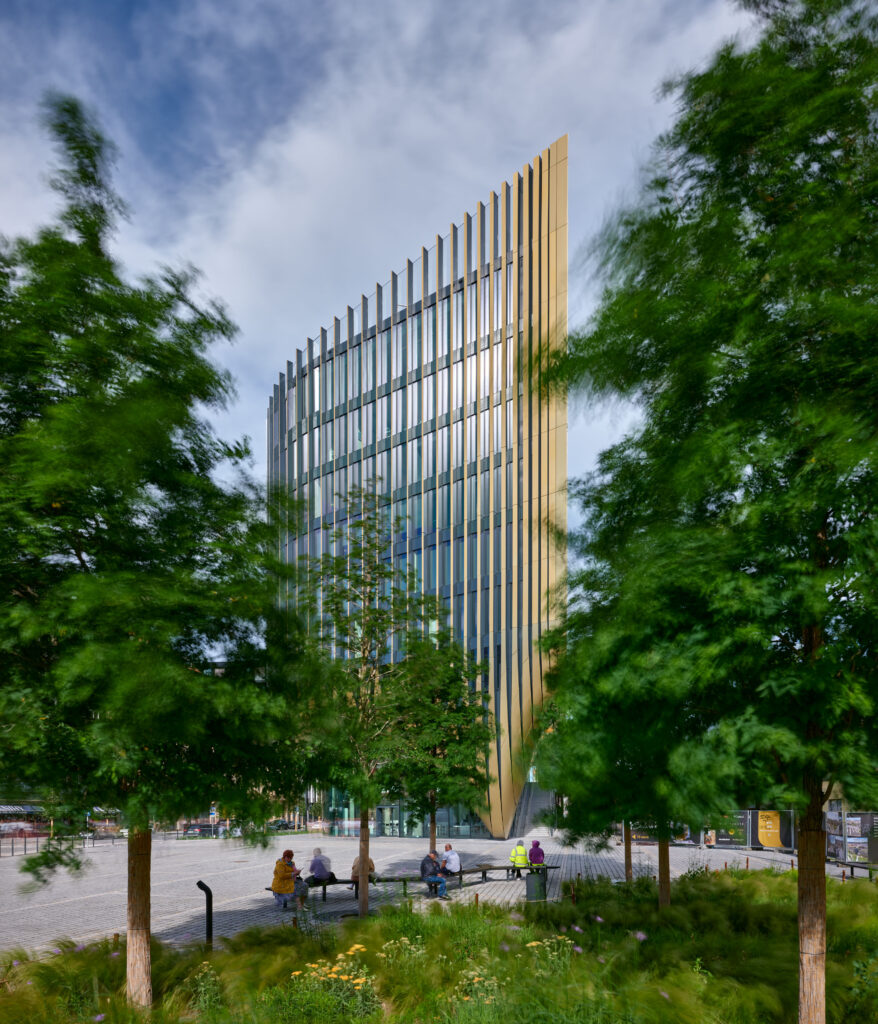
Australian Public School Recognized as “World Building of the Year” at International Awards

## How Can Architecture Change the World? Insights from the 2023 World Architecture Festival
The 2023 World Architecture Festival (WAF), held in Singapore’s Marina Bay, showcased the profound impact of architecture on society and the environment. From fostering Indigenous cultural preservation to addressing massive global challenges like climate change, war recovery, and technological advancement, architects around the world continue to prove that design is not just about aesthetics—it’s about transforming the future.
Every year, since its inception in 2008, the WAF brings together visionary minds that offer new solutions to pressing issues. Through awards like the prestigious *World Building of the Year* and the WAFX Prize (created on WAF’s tenth anniversary), architects are recognized for their contributions to addressing both functional and social challenges of our time. The latest event exemplifies how design can uplift, empower, and pave the way for a more sustainable, equitable world.
### World Building of the Year: Darlington Public School – FJC Studio
This year’s highly coveted *World Building of the Year* title was awarded to the **Darlington Public School**, designed by FJC Studio in Sydney’s Chippendale suburb, Australia. The school’s architecture is a celebration of both local history and the future, integrating the experiences of the Indigenous community into its design. The structure features hand-painted murals and a community garden growing native plants utilized by Indigenous Australians. Described as “poetic” by WAF Program Director Paul Finch, its use of natural light, organic forms, and thoughtful integration into the local landscape earned it recognition as a model for cultural preservation through architecture.
### Resilient Gaza: A Landscape of Resistance
In the “Ethics and Values” category, Islam El Mashtooly’s project **”Resilient Gaza: A Landscape of Resistance”** underscores the ways in which architecture can resist destruction and build toward a future of self-sufficiency and peace. Mashtooly, an architect and previous curator for the 2018 Egyptian Pavilion at the Venice Biennale, outlined a vision of resilience for the Gaza Strip, a region ravaged by war and longstanding conflict. His team at Design and More International places an emphasis on land remediation, where the project centers on revitalizing the earth to foster independence and life for the area’s inhabitants. This advancement of environmental sustainability for Gaza positions the project within broader questions about how architecture can be a tool for humanity, particularly in contested, war-torn spaces.
### Embracing Cultural Symbols in Government Architecture: Maguindanao Del Norte Capitol
Filipina architect **Gloryrose Dy Metilla** of Swito Designs was celebrated in the “Power and Justice” category for her design of the **Maguindanao Del Norte Provincial Capitol**. In a region torn by Moro armed conflict, Metilla’s building draws direct inspiration from the weaving tradition of the *tubaw*, a symbolic headscarf worn by community leaders. The design features a literal wraparound structure and is oriented toward the East, where traditional Maguindanoan leaders face during important cultural ceremonies. This keeps the local history alive while the building itself serves as a contemporary symbol of peace and governmental authority.
### Addressing Post-Revolution Women’s Rights: Shahinshahr Women’s Park
Iranian architects Alireza Sherafati and Pantea Eslami reimagined *Shahinshahr Women’s Park* in their award-winning project that tackled the limitations placed on women in post-revolutionary Iran. Through their concept for a women’s gym and park that defies the isolating tendencies of single-gender spaces, Sherafati and Eslami proposed a design that can slowly pave the way for social changes. The park, designed with a complex wall structure that is both functional and symbolic, aims to break down boundaries between men and women while still operating within current societal constraints. Their project opens up a conversation about how design can challenge prevailing political ideologies, even in the face of adversity.
### Experimental Architecture: The Portal and the Metaverse
In the *Digital and Technology* category, John Marx’s **”The Portal”**—a futuristic, spherical structure designed for Reno, Nevada—demonstrated how architecture could converge with cutting-edge technological trends. Envisioned as a living laboratory for the Metaverse, The Portal is more than a visually striking hub—its internal systems include hydroponics for waste recycling, convention spaces, and residential areas. This forward-looking structure engages directly with the integration of technology into everyday life and invites a reshaping of our urban environments to accommodate future innovations.
### Architecture as a Response to Global Challenges
Paul Finch summarized the competition’s array of winners by emphasizing the ways in which architecture not only addresses practical solutions but enhances societal wellbeing. Beyond functionality, he argued, architecture has the ability to elevate the human spirit.
This sentiment is echoed throughout the WAF entries, where themes such as cultural identity, environmental sustainability, technological advancement,